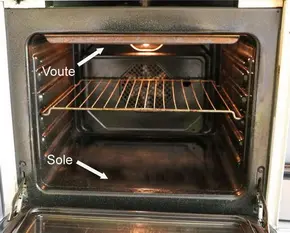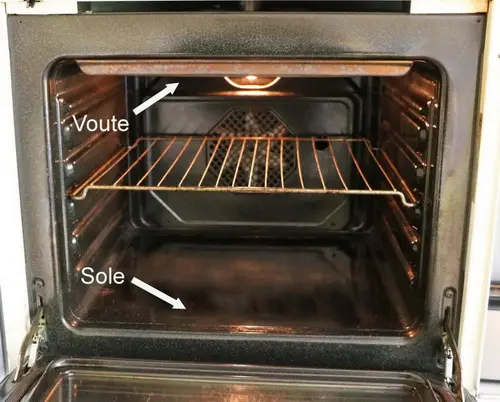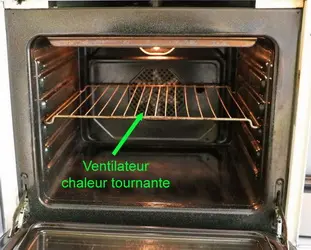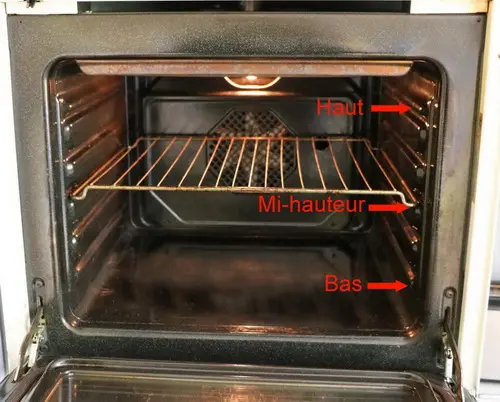The blog of cooking-ez.com
Kitchen ovens

You certainly have one in your kitchen, an oven, the essential tool for all kinds of cooking, whether in the kitchen of course, but also in pastry, bakery, pizza, and many others.
Here is some information on its structure and operation.
Here is some information on its structure and operation.
22K 17 4.4
Last modified on: May 16th 2020
Keywords for this post:OvenCookingTemperatureUseTipsKitchen ovens
What is an oven?
It is a cooking method, as old as cooking, which consists in cooking food without direct contact with the heat source (as on a stove for example), but in a closed and heated enclosure.How does it work?
We are talking here about an electric oven, they are made of a square steel enclosure, thermally insulated, which closes with a tight door, often glazed.
The top of the oven is called "the vault" ("voute" in french), the bottom "the sole".
There is an electric resistance under the roof (often visible) and another one under the bottom (invisible), these two resistances when they receive electric current transform it into heat, it is what makes your oven heat up.
Normally one use the 2 resistors, to heat on the top and the bottom, but sometimes we need to heat only on the top, to make gratin, it is called the "grill" position, and in this case only the top resistor is heated and often at maximum power.
Here is the general principle: a closed and insulated enclosure, and 2 heating elements to heat the inside.
Improvements

More recently, there is also "pulsed heat", in this system the internal fan, which is always present, has its own heating resistor which delivers heated air, instead of stirring the air in the oven. Preheating and baking time is further reduced.
Lighting
ovens are lit, more or less well, and in the basic version, it's a simple small incandescent bulb (like a fridge lamp) that lights up the interior rather poorly. We have to admit that the lighting is rather average.The first improvement is that the lighting moves towards the vault, and is transformed with a halogen bulb. It's much more efficient.
The next improvement will see ovens equipped with leds, giving a powerful and regular light. This is already available at the time of writing (May 2020), but for the moment only in the higher end ovens.
The position in the oven

This position allows you to adjust a little where you want the heat to have the most effect:
- To put at the bottom, means that we want to insist on the bottom of the dish to cook it more (example a pie)
- Putting it on the top means that you want to put more heat on the top of the dish to cook it more (example a gratin)
- Putting it in the middle means that you want the dish to be cooked in a classic way, without any particularities.
What to choose?
There are many possibilities: rotating heat or not, position in the oven, temperature...Don't worry, with cooking-ez.com it's simple: if a special oven configuration is needed for a recipe it will be expressly indicated. And if not, always opt for "rotating heat" (if you have it) and position of the rack "halfway up".
Lasts posts
Wipe meats and fish before cooking
When you want to cook meat or fish, there's a very simple yet very important step to take before you even start: It's to dry, or wipe, each side of the meat or fish, sometimes called "dabbing" or "sponging". But why? And how? Let me explain.1,5125 April 14th 2024
Toss the salad
When you've finished preparing a salad, green or otherwise, it's usually time to add the dressing and toss. It's often said to "toss the salad", which means to season and mix. Is it easy? Not so easy...2,8515 March 8th 2024
Half milk, half cream
In a multitude of recipes, savoury or sweet, milk is used as the main ingredient, or at least as the main liquid ingredient. Milk is used instead of water, for example, because milk contains a proportion of fat, which adds roundness and softness to the recipe. This mellowness is very pleasant on...2,691 February 27th 2024
Cutting soft cheeses
As you may have already noticed, when you have to use a "soft" cheese in a recipe - their exact name is "soft cheese" - such as Camembert, Munster or Mont d'or, it's not easy to make anything other than thick slices.2,8105 February 20th 2024
It's spinning too fast!
When you need to grate or slice vegetables, you generally use an electric machine that does all the work: a food processor, a mixer with a "slicer" extension or similar. Are these machines really suitable? Generally speaking, yes of course, but there's one criterion that often poses a problem,...5,7765 November 12th 2023
Other pages you may also like
Candied fruits: don't get ripped off
Do you like candied fruit? You might like to nibble a handful or add it to a recipe, like a classic fruit cake or delicious Italian specialities like panettone or sicilian epiphany pie.53K 24.2 June 21th 2017
What is the difference between bakery and patisserie?
This is a question that you may well have asked yourself and which I will attempt to answer. In France the two trades of "boulangerie" (bakery) and "pâtisserie" (patisserie and confectionery) have always been quite distinct, but where exactly do the boundaries lie? .119K 14.1 February 7th 2017
The right weight of pastry for a pie
Let's try to solve a thorny problem: How much dough will I need when I make my next pie? You're planning to make a pie, you're going to use your favourite mould or circle, but how much pastry will you need to fill it completely with a well spread pastry, without being too thin, or on the contrary...58K4.3 March 20th 2020
Unmoulding cakes while hot
When you make a cake, pound cake or whatever (what bakers call a "travel cake" because it's easy to carry around) you've most likely made a batter, either by hand or in a food processor, which you then pour into a buttered pan. It's a classic, and I've already talked to you about 2 or 3 tips on...32K4.6 February 6th 2021
Fruits which can ruin your jelly
There are many ways of making a fruit mousse, but one of the simplest is to prepare a fruit jelly (basically a fresh fruit coulis with gelatine) and then mix this jelly before it sets completely with whipped cream. The result is perfect for filling a charlotte, for example. But do beware;...68K4.0 March 6th 2013
Follow this page (as 3 people already do)
If you are interested in this page, you can "follow" it, by entering your email address here. You will then receive a notification immediately each time the page is modified or a new comment is added. Please note that you will need to confirm this following.
Note: We'll never share your e-mail address with anyone else.
Alternatively: you can subscribe to the mailing list of cooling-ez.com , you will receive a e-mail for each new recipe published on the site.









